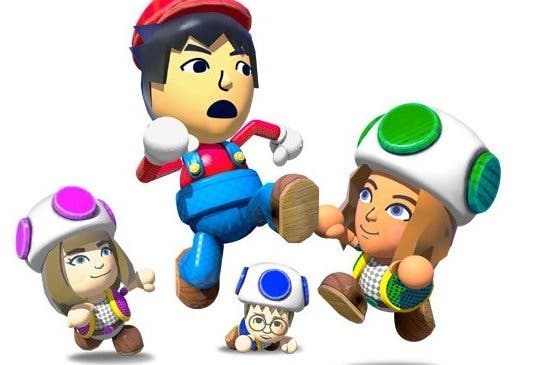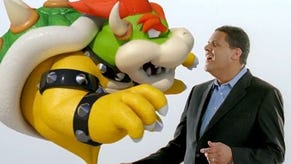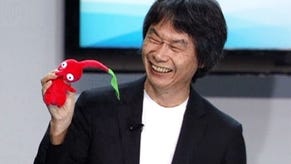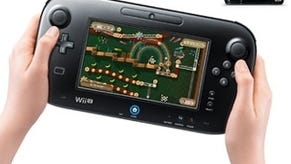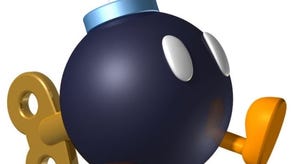Nintendo Land remains one of the only games to tap the Wii U's potential
Land of opportunity.
It was far from an auspicious start. Before Nintendo Land was debuted in the Nokia Theater at 2012's E3 conference, there was a small momentum gathering behind the Wii U: this was the console that would take the company back to its core audience after its mainstream dalliance with the Wii, the homecoming that would see it take the fight to Microsoft and Sony as it moved away from mini-game compilations and returned to the more traditional, hard-edged propositions that had forged its reputation.
All that was lost, though, when Katsuya Eguchi took to the stage to give a long, flat presentation of the title Nintendo chose to place on the front-lines of the Wii U's impending launch: a disparate collection of branded mini-games that seemed like a slight return to the approach that had seen Nintendo fall out of favour with so many of its fans.
Nintendo needed a game to sell the Wii U, its potential and its promise, and the sprawl of Nintendo Land never really seemed quite up to the task. Its concept weren't clean enough to gain wider traction, and not quite focussed enough to win over the core. Think of the success of the Wii and you're really thinking of the simple, sellable pleasure of Wii Sports, of its playful, direct approach that helped usher Nintendo's console into millions of homes. When Nintendo Land came out, everyone was still curious to know what the Wii U actually was, and where it was coming from. The answer was hard to find in that tangle of diversions.
Over two years later, it turns out you can find the Wii U's philosophy, with all of its mad genius and all of its maddening failings, strung throughout Nintendo Land. This is a strange game for what will likely long be remembered as a strange console, yet in the midst of all that sprawling eccentricity there are moments of pure inspiration. Beneath that fabric soft veneer, too, Nintendo Land can be brutally hardcore, born of the bareknuckle arcade classics of the 80s. These are mini-games that don't hold their punches, and that don't shy away from presenting a steely challenge.
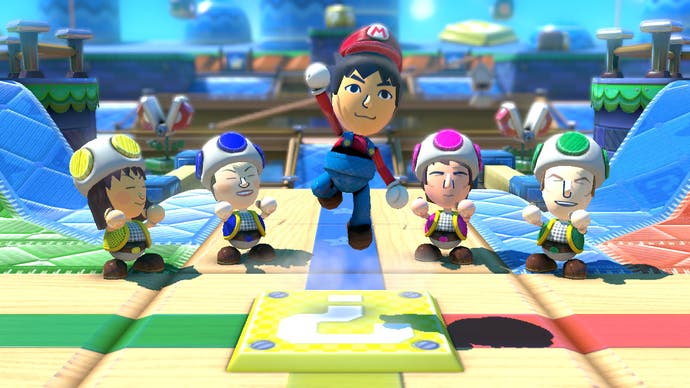
It's a carnival of invention, all delivered with the candyfloss-sweet showtime kitsch of the funfair. Indeed, if Nintendo's recent partnership with Universal delivers a theme park with the vigour, colour and all-out fun of Nintendo Land's plaza then we're in for a treat: this is one of those titles where the process of selecting each miniature diversion can be more entertaining than many other whole games.
What games there are beyond that plaza, too. Nintendo's always placed a premium on the feel of its games, and there's no better place to sample a selection box of that engineering in practice than in Nintendo Land: the sense of silvery resistance in the shurikens you flick at the screen in Takamaru's Ninja Castle, the oak creek of the wooden tracks and carts in Donkey Kong's Crash Course and the slick inertia of the vehicle in Captain Falcon's Twister Race. They're experiments, though they're hardly throwaway - these are sketches filled out and embellished with Nintendo's masterly strokes.
There are duds in Nintendo Land's line-up - Yoshi's Fruit Cart and Octopus Dance are too slight, and they're not particularly smart in the first place - but there are some absolute gems, too. The Legend of Zelda: Battle Quest, Metroid Blast and Pikmin Adventure are often cited as the highlights of the package, and they're all neat, fully-formed games with hardcore hearts, but it's Balloon Trip Breeze that's perhaps the best of the single-player bunch. A breezy revisit of 1985's Balloon Fight - itself a delicious partnership between designer Yoshio Sakamoto and Satoru Iwata, back when the now president of Nintendo was still getting his hands dirty with code - it's simplistic stuff, and deliberately so.
Oli's original review said it may well have been a smartphone game, which was fair enough - but what a smartphone game it would have been, and how fascinating it is to see what may well happen now Nintendo has turned some of its focus to mobile. The details in Balloon Trip Breeze are exquisite: the way the soft-fabric background revolves like a duvet on a roller, the animation of fallen enemies as they panic their way into the rolling ocean and the slowly changing seasons and weather that's matched by the shifting soundtrack. That music! And that feel, a perfect sense of inertia instigated by swipes and prods of the Wii U's Game Pad.
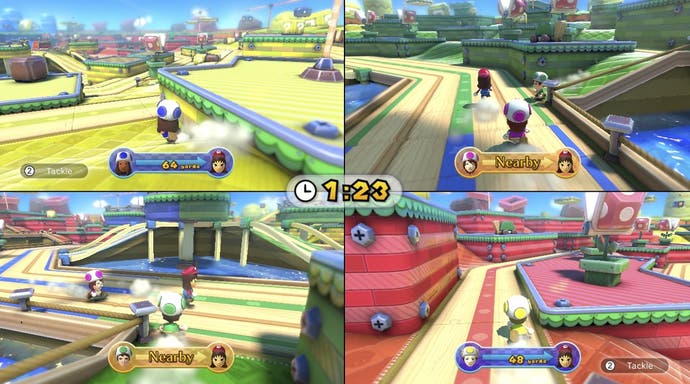
It's a wonderful diversion that's Nintendo Land at its purest, placing a candy wrapper around the company's arcade heritage. It's not even Nintendo Land at its very best, though: the heart of this collection, and what's made it an enduring classic since the Wii U's launch in 2012 are its trio of multiplayer treats, Animal Crossing: Sweet Day, Luigi's Ghost Mansion and Mario Chase.
This is Nintendo Land at its most eccentric, and its most delightful. It's the Wii U at its unique best, too, where everything that's so strange and brilliant about Nintendo's console is explored to its fullest. The asymmetric multiplayer that Nintendo's designers riff on in this trio may not have been a particularly new idea, but outside the world of board games it's rare to see it done so well in video game form - and it's unlikely there'll ever be the hardware set-up to see it ever done so well again in the future, either.
It's communal gaming at its noisiest, its most boisterous and its most fun. Hear the screams of a team working to catch another player in Mario Chase, or witness the different flavours of tension offered up in the gauntlets of Sweet Day and Luigi's Ghost Mansion. Take in that detail, the picture at the top of a screen that broadcasts the escaping player's fear and joy as they goad their opposition. At times it's brutally basic, but that doesn't matter when no other game's capable of getting people to play together this well. Two years on, there's nothing else quite like it.
There still has yet to be a game that showcases the Wii U quite so well, either. Nintendo Land was once thought of as a sprawling template, a sign of what's to come, but in truth so many of its concepts were never followed up on, and never expanded upon. Perhaps it's Nintendo's own fault for perfecting so many of those ideas first time around. It's taken until Splatoon - tellingly, the most comprehensive outing for Nintendo's EAD Software Group 2 since the release of Nintendo Land - to fully explore all that potential, and that's already looking like it could be another of Nintendo's modern classics. Whenever the dust settles on the Wii U, though, it's surely these two games that will be remembered as the pinnacles of Nintendo's offbeat venture - two games that took all that's wonderful about Nintendo, and threw in a whole load of weird too.
